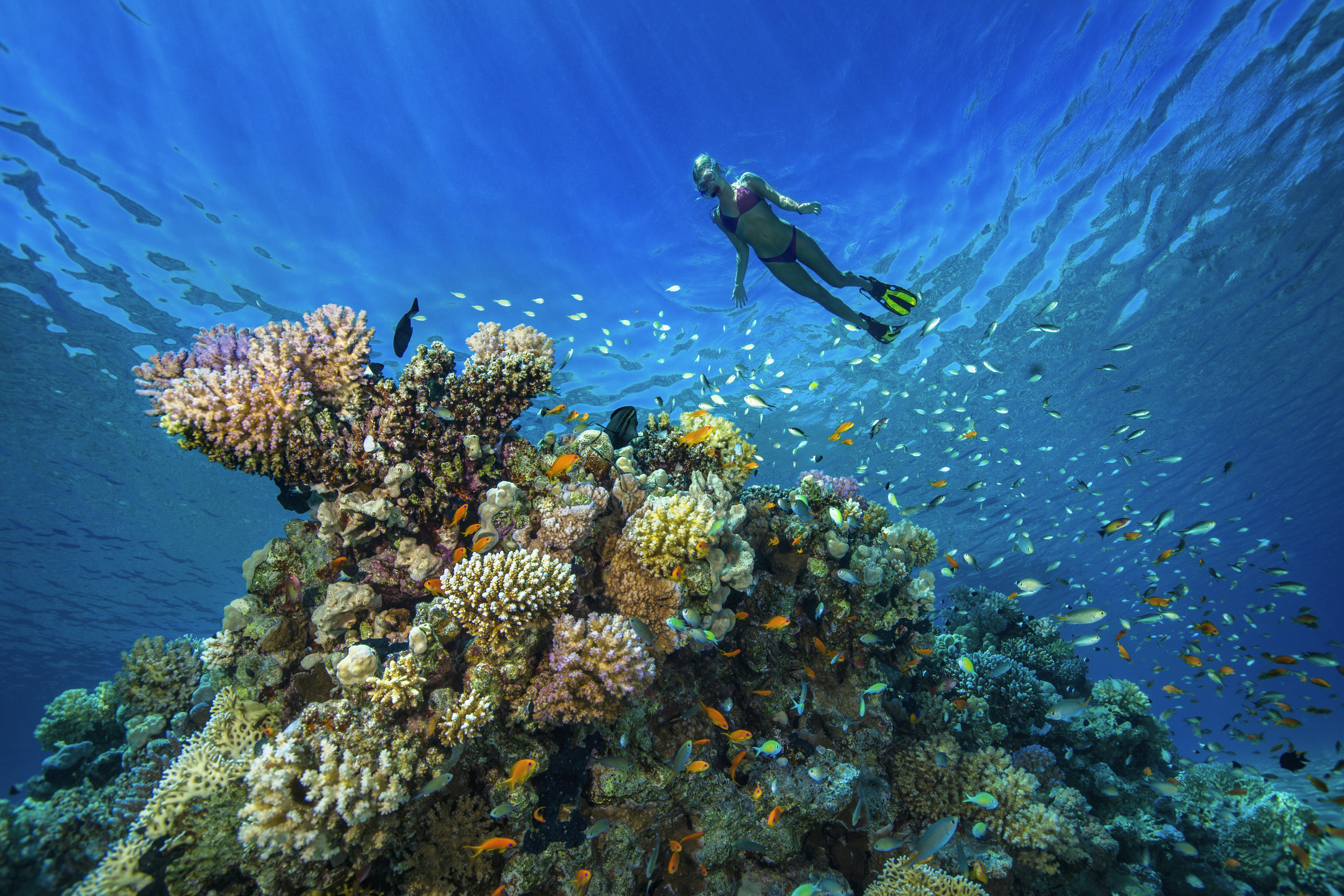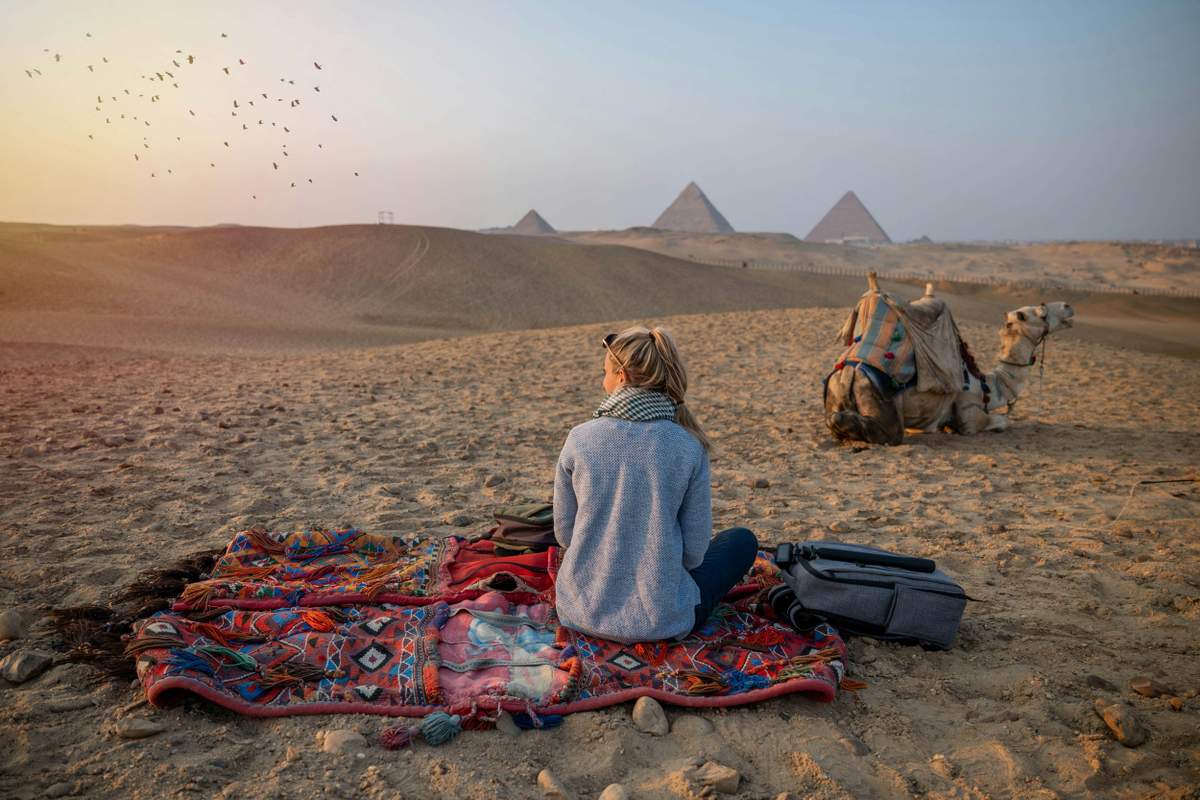
Morocco vs Egypt: which north African country should you visit?



Left: Karnak Temple in Luxor, Egypt. Right: The Sahara in Morocco. iStock
North Africa calls – but to which of its legendary destinations’ siren songs should you answer?
We asked a pair of experienced correspondents to each sing in praise of two of the region’s most beguiling countries to visit: Morocco and Egypt. Whichever place you pick for your next journey, you’re sure to strike the right note.

Mesmerizing Morocco
Travel journalist and UK native Sally Kirby moved to Morocco in 2018, realizing she would always have places (and waves) to feed her curious, surf-loving soul there.
Did you know that Morocco has nine Unesco World Heritage sites? Egypt? Just seven. Sure, one of them is the Great Pyramid of Giza – but archaeology enthusiasts are spoiled for choice with the ancient sites (empty of crowds and mostly free of charge) all over Morocco. You'll be able to see the exquisite Roman ruins at Volubilis, the ancient casbah Ait Ben Haddou, and the medinas of Marrakesh, Fez and Essaouira, plus Igiliz, a long-forgotten acropolis now being excavated and opened to tourists in Morocco.
Alongside these ancient sites are Morocco’s trendsetting cities such as Rabat, Marrakesh and Casablanca. They cater to a growing number of discerning residents and visitors, with lively art scenes, contemporary museums, shopping malls, luxury hotels, buzzing nightlife and top music festivals – all linked by modern tramways and high-speed trains.
Morocco’s Sahara offers a glimpse into a nomadic way of life. The giant dunes of Erg Chigaga and Erg Chebbi feature an ocean of red sand that rises up to 500ft (150m) over the surrounding terrain. This is the real Sahara and very easy to access. But don’t just take my word for it; you can read up on the differences between the Moroccan and Egyptian desert experiences from other reliable sources.

Now let’s talk about Morocco’s 1250 miles (2000km) of Atlantic coastline, home to some of the best surfing waves in the world. (Sorry, Egypt.) The country’s surf capital, Taghazout Bay has a 3-mile (5km) sandy beach that blends luxury beach resorts with a surf-and-yoga, go-with-the-flow vibe that’s inspiring reels all over Instagram. Anchor Point, the local showstopper wave, now hosts a leg of the WSL (World Surf League) international surfing championship. Oh, and in a counterpart to Egypt’s Mediterranean and Red Sea beaches, I should mention Morocco’s Mediterranean coast, home to striking emerald coves and stunning beaches for the 310-mile (500km) stretch between Tangier and Oujda.
All that coastline makes Morocco well positioned to haul in plentiful fresh fish: the country is the world’s largest exporter of canned sardines. Moroccans traditionally serve their fish straight off the boat onto a grill, with seasoning, olive oil and a squeeze of lemon – as fresh as it comes, and utterly delicious. Food is a massive part of Moroccan culture – usually home-cooked using seasonal recipes handed down over generations. Tasty tagines, couscous, soups and salads are guaranteed.
Perhaps Morocco’s biggest asset is its year-round sunshine, making it an excellent beach or pool vacation choice, especially in the south, around Agadir. With such abundant sun, Morocco is home to the world’s largest concentrated solar farm and on track to become a leader in renewable energy. The heat is less intense than on Egypt’s Red Sea beaches, primarily due to the cool breeze that blows off the Atlantic Ocean even in the summer months.

Hiking enthusiasts flock to the Atlas Mountains, with its easily accessible day and longer treks. At 13,670ft (4167m), Mt Toubkal is the highest peak in North Africa, providing an interesting hiking challenge for wannabe mountaineers. Nature and wildlife lovers can also enjoy safari adventures in the national park near Ifrane, home to Barbary apes, or Souss-Massa National Park, with its oryx and other endemic species.
If you’re still undecided, one final point: the spirit of Morocco will speak to you. This is a peaceful country with community at its heart, where people have time for each other and the things that matter. To be part of that, even for a holiday, can be a life-changing travel experience. One I wholeheartedly recommend.

Enchanting Egypt
Dr Jenny Walker has spent 25 years working in the Middle East and has covered Egypt among other regional destinations in multiple Lonely Planet guidebooks. In recent years, she drove 8500km (5300 miles) from Oman to her home in northern Spain.
“It’s sublime,” a friend newly returned from Morocco said. “It has mountains as high as the Alps, souks more labyrinthine than the Hampton Court Palace Maze and old castles that put the pyramids in the shade.” Pausing to take a breath between superlatives, she added, “And there’s a garden in Marrakesh that’s quite simply a world wonder.”
Well, I grant you the Atlas Mountains are a wow, particularly when dusted with winter snows. And yes, you’re bound to get lost in the souqs of Fez and Marrakesh (and I get that Yves Saint Laurent’s garden is exotically blue). But can the desert fortifications, which only hint at the mighty Sahara beyond, really overshadow the great works of the ancients?
Let’s face it: if it’s world wonders we’re talking about, there’s simply no contest. No other country but Egypt offers the chance of visiting one of the original seven. Looming over the desert on the edge of Cairo and built to house the remains of Khufu – a powerful Old Kingdom pharaoh from the 26th-century BC – the Great Pyramid is the only wonder from the ancient world that survives.
You can read about it, imagine its size and conceptualize its age, yet only sitting on a camel pacing across the arid Giza Plateau can you really appreciate its extraordinary scale and beauty. The pyramids have inspired creation myths (think “alien conspiracy theories”), been the subject of a dedicated branch of archaeology and have been immortalized in film to such an extent that “Indiana Jones” has become an adjective in Egyptian culture. They continue to feature on the top 10 must-dos of most travelers’ bucket lists. Nothing can put these giants in the shade.

And if we’re talking “bests” – let’s throw in some other world wonders. Take Luxor’s Valley of the Kings, where just over 100 years ago the tomb of Tutankhamun was uncovered with all the young pharaoh’s funereal possessions intact. Nested in an elaborate three-part sarcophagus, Tutankhamun’s mummy was surrounded by magnificent artifacts comprising over 2600lbs (1200kg) of gold – more dazzle than all the polished brass of a Meknes market combined.
We shall take it as a given then that when it comes to the ancients, Egypt is unparalleled. But what about adventure? Sure, Morocco has high mountains, but Egypt has its own share of natural bounty. There’s a river for a start, and not just any old river – at 4130 miles (6650km) the Nile vies with the Amazon as the world’s longest. Supporting life along its shores for thousands of years, it offers today’s visitors a green way of traveling between top sites.

Then there’s the desert. Its western area is a geography lesson in geological formations and remote oasis towns; the eastern part is home to hermits. In the tradition of monastic isolation inspired by their mountain strongholds, the brethren of the monasteries of St Anthony and St Paul, together with St Catherine’s in the Sinai, have inherited not just a legacy of Coptic treasures but also the art of living simply.
And the garden? I’ll concede that Jardin Marjorelle is a modern Marrakesh classic. But for now, my money’s on the gardens of the deep, which lie off shore in the crystal clear waters of Egypt’s Red Sea. Home to dugong, whale sharks and 1000 species of fish, these superb waters are decorated with 150 types of corals, every bit as exotic as a garden in blue.















